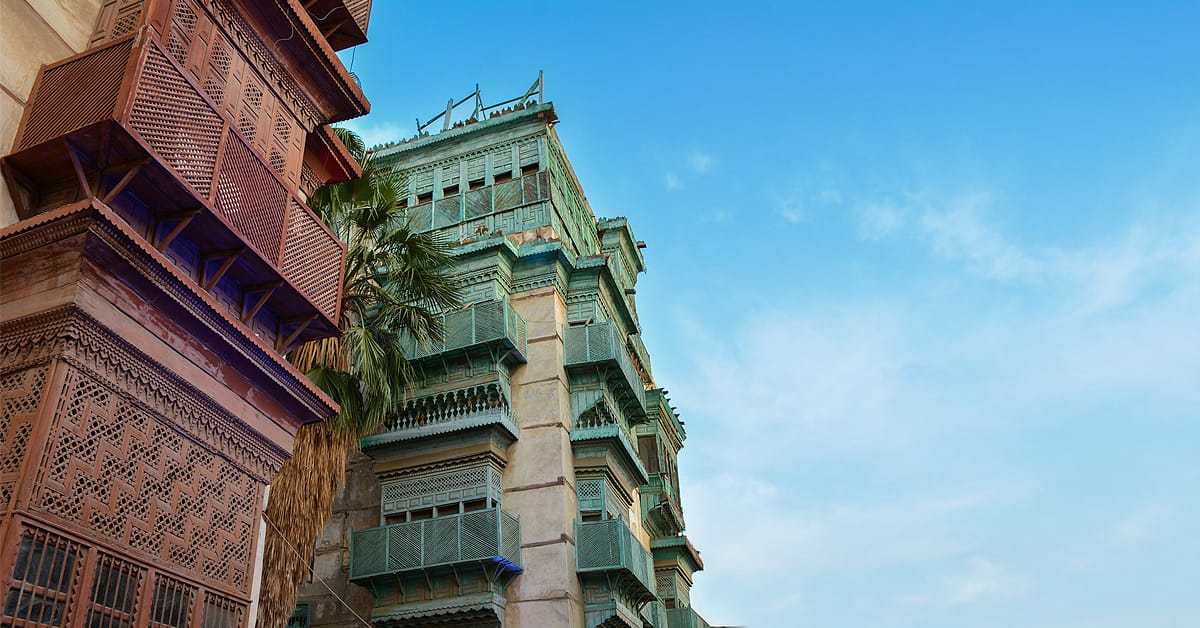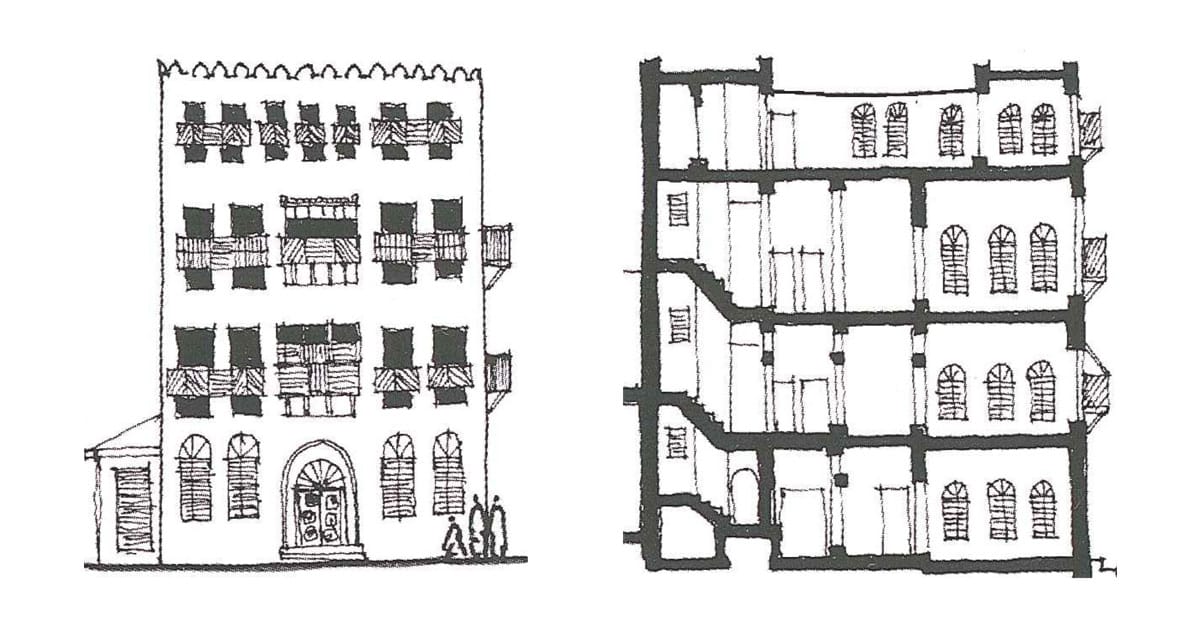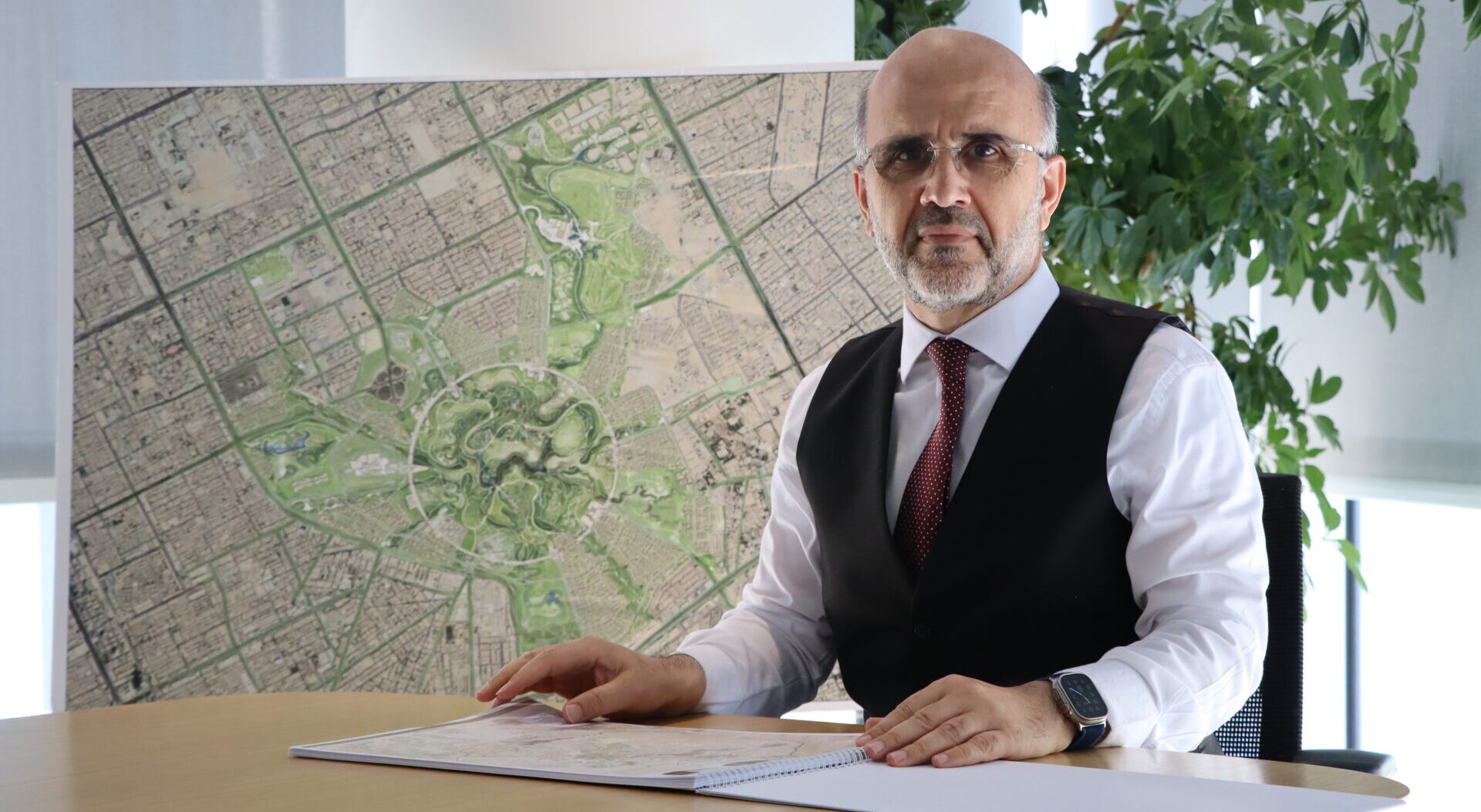 Mashrabiyas filtering sunlight and providing visual privacy and an opportunity for ornament. Photo © kv naushad
Mashrabiyas filtering sunlight and providing visual privacy and an opportunity for ornament. Photo © kv naushad
The idea of “vernacular architecture” might initially conjure images of Italian hill town plazas or the whitewashed, blue-trimmed houses of Sidi bou-Said, Tunisia. Fewer people are familiar with the vernacular architecture of Saudi Arabia’s western region, called the Hejaz, which was the subject of a significant research project by Omrania.
Our team found strong remnants of vernacular architecture in the region’s historic cities of Mecca, Medina, Jeddah, Taif, and Yanbu, which were shaped over the centuries by itinerant artisan builders who traveled from one city to another. Today the Hejaz region has extensive modern infrastructure and facilities to accommodate millions of annual pilgrims. Nonetheless, the surviving older buildings in the historic cities can be characterized by eight distinctive architectural features:
- Rectilinear form to accommodate higher density and ease of construction.
- Multistory buildings with division of functions by level. Many houses were designed to accommodate the influx of pilgrims, with the ground floor used as a reception space or salon, and the first floor used as a dwelling for guests. The remaining floors above were reserved for the private use of the permanent resident family.
- The mashrabiya, a projecting oriel window with lattice screen, probably the most significant architectural feature of this region. Mashrabiyas are at once functional and aesthetic elements that can be widely reconfigured according to local needs and customs.
- Use of the roof level as an auxiliary living space. In a logical response to the hot climate, families would sleep on the roof in the summer to enjoy the cooler night air.
- Ornament: typical motifs include geometric patterns, Arabic calligraphy, and abstract plant forms, often introduced onto wall surfaces, mashrabiyas, and surrounding doors and windows.
- Articulation of doors. Doors were important as a welcoming element, especially to visitors and pilgrims, and also an expression of the owner’s character and social status.
- Use of local building materials such as coral stone, silt clay, and palm wood, which imbue the architecture of the Hijaz with its characteristic colors and textures.
These architectural elements are shared in common throughout the five cities, but with individual variations in expression, according to their different environmental and social conditions. The full report on our research can be found on our website.
For Omrania, the study of vernacular architecture is one of the ways in which we continually seek to learn from the past and our rich cultural heritage, even as we incorporate the latest technologies and plan for the future. Vernacular building practices help tell the story of places and peoples, and contain valuable knowledge accumulated over many generations.
Omrania, a renowned architecture firm, has established a reputation for excellence in blending aesthetic and functional design, setting a benchmark for architecture firms in Riyadh, Saudi Arabia.















